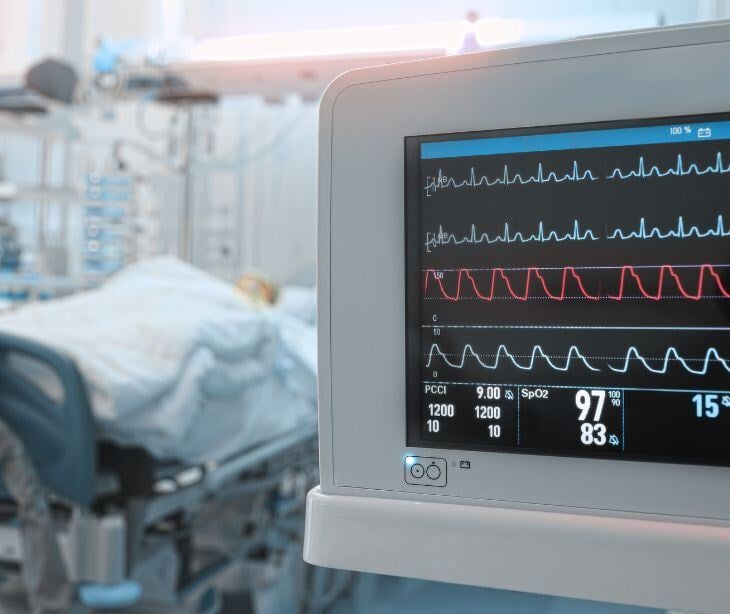
The Lehigh Valley Health Network settlement demonstrates the financial, reputational, and operational costs of failing to adequately protect patient data in the healthcare sector. However, it also presents an opportunity for healthcare providers to strengthen their defenses, invest in patient trust, and commit to transparent, responsible data handling. By learning from this incident and taking proactive steps, organizations can avoid costly breaches and ensure they are safeguarding the sensitive information that patients entrust them with.
Lessons
The $65 million settlement between Lehigh Valley Health Network (LVHN) and patients affected by a 2023 data breach shows how deeply cybersecurity impacts people’s lives in healthcare. The revelation of confidential medical records and intimate patient imagery through the breach stresses healthcare organizations' need to rectify vulnerabilities. Here are important lessons we can all learn from this case to prevent similar incidents and rebuild trust.
Lesson 1: Prioritize comprehensive cybersecurity measures
Organizations must implement stringent measures like multi-factor authentication (MFA), network segmentation, and real-time threat detection to defend against such sophisticated attacks. Regular vulnerability assessments and audits of existing security protocols are also crucial to identify gaps before they are exploited.
Action: Invest in modern cybersecurity solutions and continuously update defense mechanisms to stay ahead of emerging threats.
See also: Tips for cybersecurity in healthcare
Lesson 2: Have a data breach response plan
While no organization is immune to cyberattacks, a swift and transparent response can mitigate the damage and build trust. LVHN began notifying potentially affected individuals in mid-March of 2023 after the breach was confirmed in February and provided two years of identity protection and credit monitoring services. However, in some cases, delays in communicating breaches can compound the harm.
Healthcare providers should develop a comprehensive incident response plan that includes rapid detection, containment, and clear communication with stakeholders. Timely notifications give individuals a chance to protect themselves from identity theft, and they help to maintain the organization’s reputation.
Action: Establish and regularly test a well-documented data breach response plan to ensure that all team members understand their roles in the event of a cyberattack.
Go deeper: How to respond to a data breach
Lesson 3: Ensure adequate protection of sensitive data
One of the more disturbing aspects of the LVHN breach was the exposure of highly sensitive patient information, including clinical images of patients. While standard personal data (names, addresses, Social Security numbers) was compromised, the breach also included leaking private treatment images for some individuals.
This illustrates the need for extra layers of protection for sensitive data, such as health records, medical imaging, and personal identifiers. Implementing encryption for data both in transit and at rest can reduce the risk of unauthorized access. Further, minimizing the storage of unnecessary sensitive data and securely disposing of old data should be part of any healthcare provider’s data management protocol.
Action: Encryption, data minimization, and secure storage practices should be applied to sensitive health information, especially visual and clinical data.
Lesson 4: Regular training for employees
According to Verizon's data breach report, published in May 2021, 85% of all breaches involved a human element. Employees who are not trained in recognizing phishing attempts, handling sensitive data, or following security protocols can inadvertently open the door to cyberattacks.
Incorporating cybersecurity training into onboarding processes, as well as hosting annual refreshers, can help maintain awareness and minimize risky behavior.
Action: Implement ongoing cybersecurity training for all employees to ensure that security awareness remains high across the organization.
Lesson 5: Maintain transparency and accountability
Although LVHN communicated the breach and took steps to address it, the settlement demonstrates that patients were dissatisfied with how their information was protected.
Transparency should extend beyond notifying affected individuals—it should include holding the organization accountable and outlining the steps being taken to rectify security lapses. This builds trust, reassures stakeholders, and signals that the organization takes its responsibilities seriously.
Action: Be transparent with both patients and the public about security incidents, outlining corrective actions to build confidence in the organization’s commitment to data protection.
See also: HIPAA Compliant Email: The Definitive Guide
Lesson 6: Invest in patient trust through strong data governance
Healthcare organizations must develop and enforce strong data governance policies to protect patient data and maintain trust. Clear policies around data access, use, and storage—backed by the right technology—are essential for building long-term patient relationships.
Action: Implement strong data governance policies and ensure that patients know their data is a priority in the organization’s operations.
FAQs
What happened in the LVHN data breach?
In early 2023, Lehigh Valley Health Network (LVHN) experienced a ransomware attack by the Alphv/BlackCat gang. The attackers infiltrated LVHN's systems, deployed ransomware, and stole sensitive patient and employee data. Over 130,000 individuals were potentially affected, with some personal information and derogatory images posted on the dark web.
What type of information was stolen?
The stolen data included personal details such as names, addresses, phone numbers, medical records, and health insurance information. For some individuals, more sensitive data like Social Security numbers, driver’s license numbers, banking information, and clinical images, including nude photos, were compromised.
How are settlements in data breach lawsuits determined?
Settlements are typically reached after negotiations between the affected party, the defendant, usually a company, and the plaintiffs, the individuals or their legal representatives. The settlement amount is determined based on the severity of the breach, the sensitivity of the stolen data, and the number of people affected.
Subscribe to Paubox Weekly
Every Friday we'll bring you the most important news from Paubox. Our aim is to make you smarter, faster.




